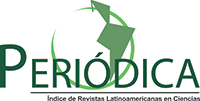Enhancing concrete sustainability: use of ground glass pozzolans as a supplementary cementitious material in low carbon concrete.
DOI:
https://doi.org/10.21041/ra.v15i2.813Keywords:
Ground Glass Pozzolans, supplementary cementitious materials, low-carbon materialsAbstract
This review summarizes the availability and processing of glass waste and highlights its impact on the fresh and hardened properties of concrete. Concrete industry is increasingly seeking sustainable supplementary cementitious materials (SCMs) to partially replace Portland cement, as traditional SCMs like fly ash and slag face declining availability. SCMs enhance concrete’s mechanical and durability properties while reducing its carbon footprint. Processed glass waste has emerged as a promising alternative pozzolan, supported by extensive research and field applications. In response, ASTM developed C1866/C1866M-20, a standard specification for ground glass pozzolan in concrete. The potential of ground-glass pozzolans as viable supplementary cementitious materials (SCMs) for producing low-carbon concrete is also discussed.
Downloads
References
Ellis, D. A., Badel, A. F., Chiang, M. L., Park, R. J. Y., Chiang, Y. .M, (2019), Toward Electrochemical Synthesis of Cement – An Electrolyzer-Based Process for Decarbonating CaCO3 while Producing Useful Gas Streams, Proceedings of the National Academy of Sciences of the United States of America, Vol. 117 (23) 12584-12591, https://doi.org/10.1073/pnas.1821673116
CarbonCloud (2024), https://apps.carboncloud.com/climatehub/product-reports/id/41919745467; Accessed on October 31, 2024
United States Environmental Protection Agency (2024), Report on Facts and Figures about Materials, Waste and Recycling, Glass: Material-Specific Data, Accessed on October 16, https://www.epa.gov/facts-and-figures-about-materials-waste-and-recycling/glass-material-specific-data#GlassOverview
Glass Recycling (2024), How is Glass Recycled? Compactor Management Company, Website Accessed on October 1, How to Recycle Glass? | Compactor Management Company (norcalcompactors.net)
Nassar, R. -U. -D. and Soroushian, P. (2011), “Field investigation of concrete incorporating milled waste glass,” Journal of Solid Waste Technology and Management, V. 37, No. 4, pp. 307-319. https://doi.org/10.5276/JSWTM.2011.307
Kaminsky, A., Krstic, M., Rangaraju, P. R., Tagnit-Hamou, A., Thomas, M. D. A. (2020), Ground- Glass Pozzolan for Use in Concrete, Concrete International, Vol. 42, No. 11, pp. 24-32.
Chakraborty, R., Dey, A., Mukhopadhyay, A. K. (2010), Loading Rate Effect on Nanohardness of Soda-Lime-Silica Glass, Metallurgical and Materials Transactions A., Vol. 41, pp:1301-1312. https://doi.org/10.1007/s11661-010-0176-8
Dezfouli, H. R. (2017), Characterization and Evaluation of Ground Glass Fiber as a Cementitious Component in Portland Cement and Geopolymer Concrete Mixtures, [PhD Dissertation, Clemson University], Retrieved from https://open.clemson.edu/all_dissertations/1994.
Smith, Y. R., Nagel, J. R., Rajamani, J. R. (2019), Eddy current separation for recovery of non-ferrous metallic particles: A comprehensive review, Minerals Engineering, Vol. 133, pp. 149-159. https://doi.org/10.1016/j.mineng.2018.12.025
Tagnit-Hamou, A., Bengougam, A. (2012), “The Use of Glass Powder as Supplementary Cementitious Material,” Concrete International, Vol. 34, No. 3, pp. 56-61.
Nassar, R. -U. -D., Soroushian, P. (2012), “Strength and durability of recycled aggregate concrete containing milled glass as partial replacement for cement” Construction and Building Materials, V. 29, pp. 368-377. https://doi.org/10.1016/j.conbuildmat.2011.10.061
Shayan, A., Xu, A. (2006), “Performance of glass powder as a pozzolanic material in concrete: A field trial on concrete slabs,” Cement and Concrete Research, V. 36, No. 3, pp. 457-468. https://doi.org/10.1016/j.cemconres.2005.12.012
Soliman, N. A., Omran, A. F., Tagnit-Hamou, A. (2016), “Laboratory Characterization and Field Application of Novel Ultra-High-Performance Glass Concrete,” ACI Materials Journal, V. 113, No. 3, pp. 307-316. http://dx.doi.org/10.14359/51688827
Schwarz, N., Cam, H., Neithalath, N. (2008), “Influence of a fine glass powder on the durability characteristics of concrete and its comparison to fly ash,” Cement and Concrete Composites, V. 30, No. 6, pp. 486-496. https://doi.org/10.1016/j.cemconcomp.2008.02.001
Afshinnia, K. Rangaraju, P. R. (2015), Influence of fineness of ground recycled glass on mitigation of alkali–silica reaction in mortars, Journal of Construction and Building Materials, Vol. 81, pp. 257-267. https://doi.org/10.1016/j.conbuildmat.2015.02.041
Afshinnia, K. Rangaraju, P. R. (2016), “Sustainable Use of Recycled Glass in Portland Cement Concrete”, The Journal of Solid Waste Technology and Management, Volume 42, issue 1, pp. 16-24. https://doi.org/10.5276/JSWTM.2016.16
Krstic, M., Davalos, J. F. (2019), “Field Application of Recycled Glass Pozzolan for Concrete,”
ACI Materials Journal, V. 116, No. 4, pp. 123-131. http://dx.doi.org/10.14359/51716716
ASTM International (2020), ASTM C1866/C1866M-20: Standard Specification for Ground Glass Pozzolan for Use in Concrete, West Conshohocken, PA. https://doi.org/10.1520/C1866_C1866M-20
Afshinnia, K., Rangaraju, P. R. (2015), “Efficiency of Ternary Blends Containing Fine Glass Powder in Mitigating Alkali-Silica Reaction”, Journal of Construction and Building Materials, Vol. 100, pp. 234-245. https://doi.org/10.1016/j.conbuildmat.2015.09.043
Amer, O. A., Rangaraju, P. R., Dezfouli, H. R. (2022), Effectiveness of binary and ternary blended cements of class C fly ash and ground glass fibers in improving the durability of concrete. Journal of Sustainable Cement-Based Materials, Vol. 11, No. 2, pp. 127-136. https://doi.org/10.1080/21650373.2021.189908
Torres-Carrasco, M., Tognonvi, M. T., Tagnit-Hamou, A., Puertas, F. (2015), Durability of Alkali- Activated Slag Concrete Prepared Using Waste Glass as Alternative Activator, ACI Materials Journal, V. 112, No. 6, pp. 791-800. http://dx.doi.org/10.14359/51687903
Cyr, M., Idir, R., Poinot, T. (2012), Properties of Inorganic Polymer (Geopolymer) Mortars Made of Glass Cullet, Journal of Material Science, Vol. 47, No. 6, pp. 2782-2797. https://doi.org/10.1007/s10853-011-6107-2
Krstic, M., Davalis, J. F. (2018), Macro- and Micro-Structure Evaluations of Recycled Post-Consumer Glass Cementitious Material for Concrete, Proceedings of SynerCrete’ 18: International Conference on Interdisciplinary Approaches for Cement-Based Materials and Structural Concrete, Funchal, Madeira Island, Portugal, Oct 2018, pp. 261-266.
Nature Editorial (2021), Glass is the hidden gem in a carbon-neutral future, Nature, 599, pp. 7-8. https://doi.org/10.1038/d41586-021-02992-8
Published
How to Cite
Issue
Section
License
_______________________________
License in effect from September 2020
You are free to:
- Share — copy and redistribute the material in any medium or format for any purpose, even commercially.
- Adapt — remix, transform, and build upon the material for any purpose, even commercially.
- The licensor cannot revoke these freedoms as long as you follow the license terms.
Under the following terms:
- Attribution — You must give appropriate credit , provide a link to the license, and indicate if changes were made . You may do so in any reasonable manner, but not in any way that suggests the licensor endorses you or your use.
- No additional restrictions — You may not apply legal terms or technological measures that legally restrict others from doing anything the license permits.
Notices:
You do not have to comply with the license for elements of the material in the public domain or where your use is permitted by an applicable exception or limitation .
No warranties are given. The license may not give you all of the permissions necessary for your intended use. For example, other rights such as publicity, privacy, or moral rights may limit how you use the material.





















.png)














